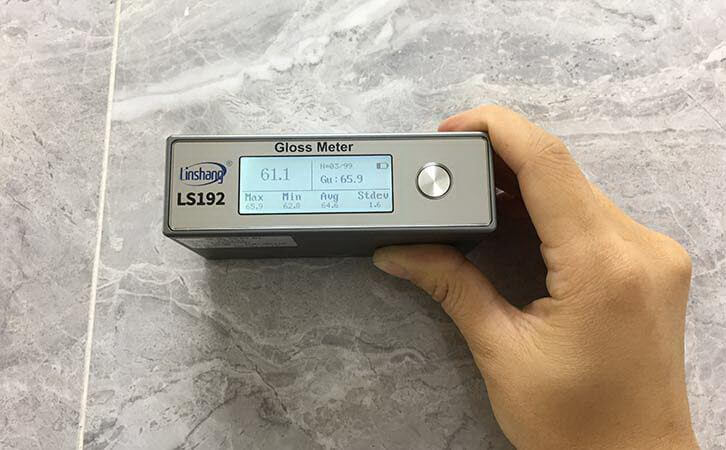Things About Ceramic Gloss You Need to Know! | Gloss Tester
1. What is ceramic gloss?
Ceramic gloss is a characteristic of the porcelain glazes surface. When exposed to light, due to factors such as the smoothness of the glaze surface, the reflective ability (specular reflection) of the different porcelains glaze surface in a certain direction is different, so the gloss level is also different. Glaze gloss is also related to its refractive index. The higher the refractive index, the higher the gloss.
To put it simply, the ceramics gloss we are talking about is "reflective" ability. A beam of light illuminates the ceramic surface and the “brighter” we observe at its specular reflection angle, the stronger its glossiness. Of course, the difference in the light incidence angle and the observation of the reflection angle will lead to differences in our judgment of glossiness.
2. Factors affecting ceramic gloss
The ceramics gloss is mainly affected by the surface glaze and roughness. The glaze layer of ceramic products is generally a glass with a thickness of 0.1mm, which has a certain color and is mixed with a few crystals and pores. The glaze layer gloss will cause a difference in the gloss of the ceramic surface.
(1) Glaze recipe
The firing temperature of the glaze should be compatible with the green body. Under a predetermined firing atmosphere and firing temperature, a uniform glass phase structure is generated as much as possible. The viscosity of the glaze solution is slightly greater than 2000 poise. The expansion coefficient of the glaze should be smaller than the expansion coefficient of the blank. When arranging the blanks, high-refractive materials can be used to make glazes with high gloss.
(2) Glaze making process
The clay raw materials for glaze are selected to remove impurities and organic matter. The clay containing free quartz and mica is pre-washed to improve purity. For those raw materials in the glaze that have a large change in heating volume, it is best to calcinate them separately and then mix them, that is, to introduce them into the glaze in the form of clinker to stabilize the crystal form and volume. When frit glaze is used, all the quartz in the glaze is added into the frit to form a homogeneous glass body.
(3) Firing system
If we only consider from the perspective of improving the glaze quality, the glaze should be excluded from the gas during the firing process to promote melting and prevent volatilization.
3. How to improve the ceramics gloss?
In order to improve the quality of porcelain glazes, when formulating glazes, consideration should be given to the glazes which have a relatively high refractive index and a higher melting temperature. This will be more conducive to the elimination of decomposition gases during firing. Reducing the spread of the glaze at high temperatures and the escape of gas from the glaze layer are disadvantageous, which can easily cause ripples and orange glaze. Appropriate glaze viscosity is beneficial to improve the high-temperature fluidity of the glaze and reduce the apparent pores of the glaze layer. Appropriate surface tension will make the glaze layer spread evenly on the green body surface, make the glaze surface smooth and improve gloss. At the same time, the surface tension of the glaze is not easy to be too small, otherwise the bubbles in the glaze will gather into large bubbles, which is not conducive to improving the ceramic gloss.
4. How is ceramic gloss determined?
After learning a series of knowledge about ceramic gloss, the most important step is how to determine the ceramics gloss! Recently, we have seen many articles about gloss testers on various websites and forums. The gloss tester can be applied to many industries such as coatings, inks, baking varnishes, wood products, marble, granite, graded polished tiles, ceramic tiles, plastics, paper and other industries. It seems that such a compact instrument has powerful functions.
It is understood that the most commonly used gloss tester in the market is the 60-degree gloss tester. We learned that there are several good gloss testers in China. There are indeed many advantages: small size, high accuracy, good repeatability, test reports print, etc., The accuracy is the most basic parameter for the gloss tester. Under these necessary conditions, how to achieve a superior customer experience?
In response to this problem, Linshang Technology has finally achieved it after a series of studies when developing LS192 gloss tester! Linshang Technology LS192 gloss testercan achieve single measurement, multiple measurements, maximum, minimum, average, mean squared error statistics. When you need to test the material uniformity, just place the gloss tester on the tested material surface. There is no need to press the button during the measurement. It is a product suitable for testing the ceramics gloss.

